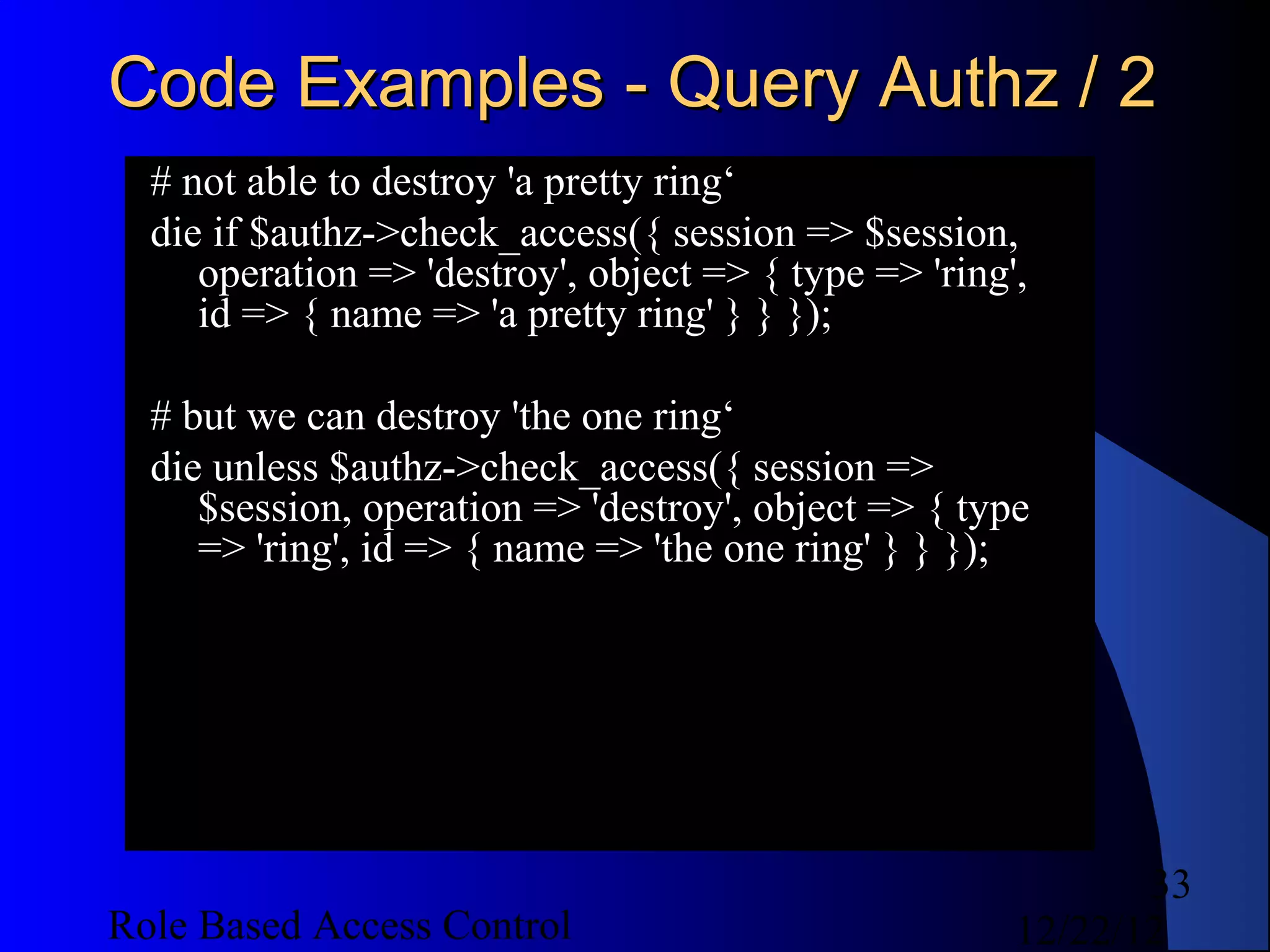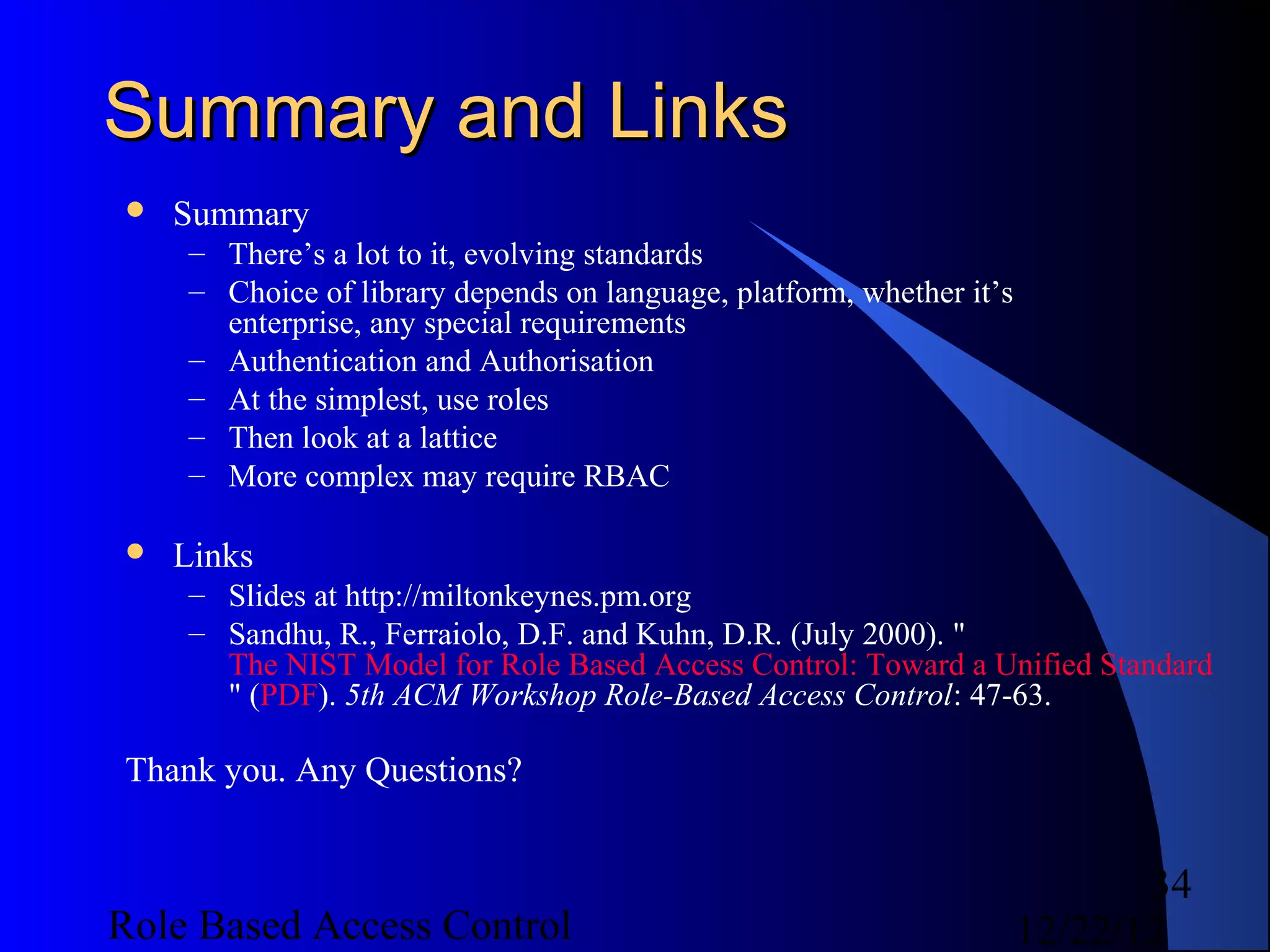This document discusses role-based access control (RBAC) and provides examples of implementing RBAC in Perl applications. It begins with definitions of authentication and authorization. It then covers authentication processes, examples of authentication modules for Perl, and how to implement authentication sessions. The document discusses different types of authorization, including simple, lattice-based access control and RBAC. It provides an example of a simple authorization module for Catalyst and an example CPAN module for lattice-based access control. A significant portion of the document is dedicated to explaining RBAC in depth, including academic papers on RBAC, emerging standards, existing security implementations using RBAC, and Perl implementations of RBAC. It provides examples of RBAC design and implementation.
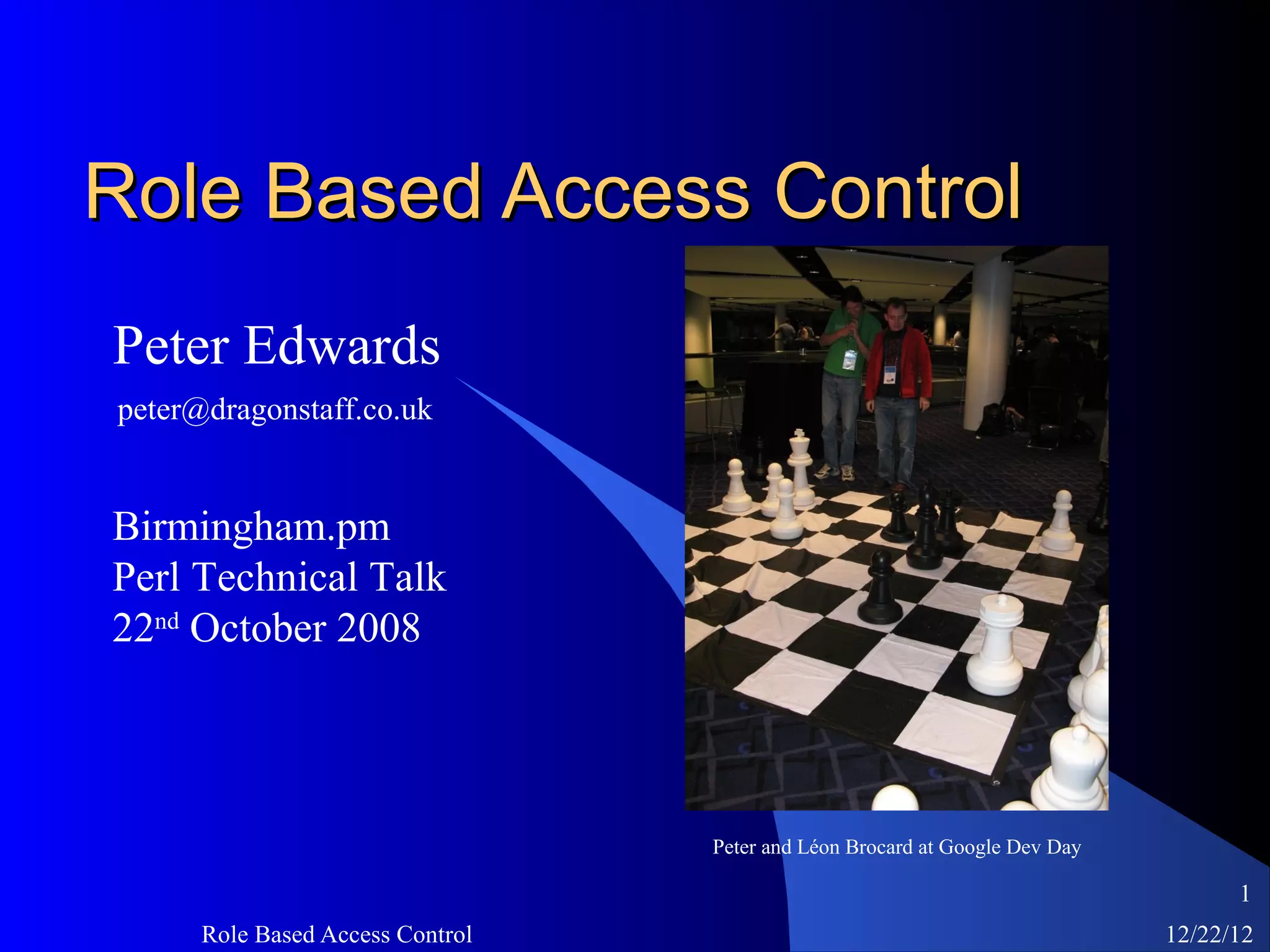

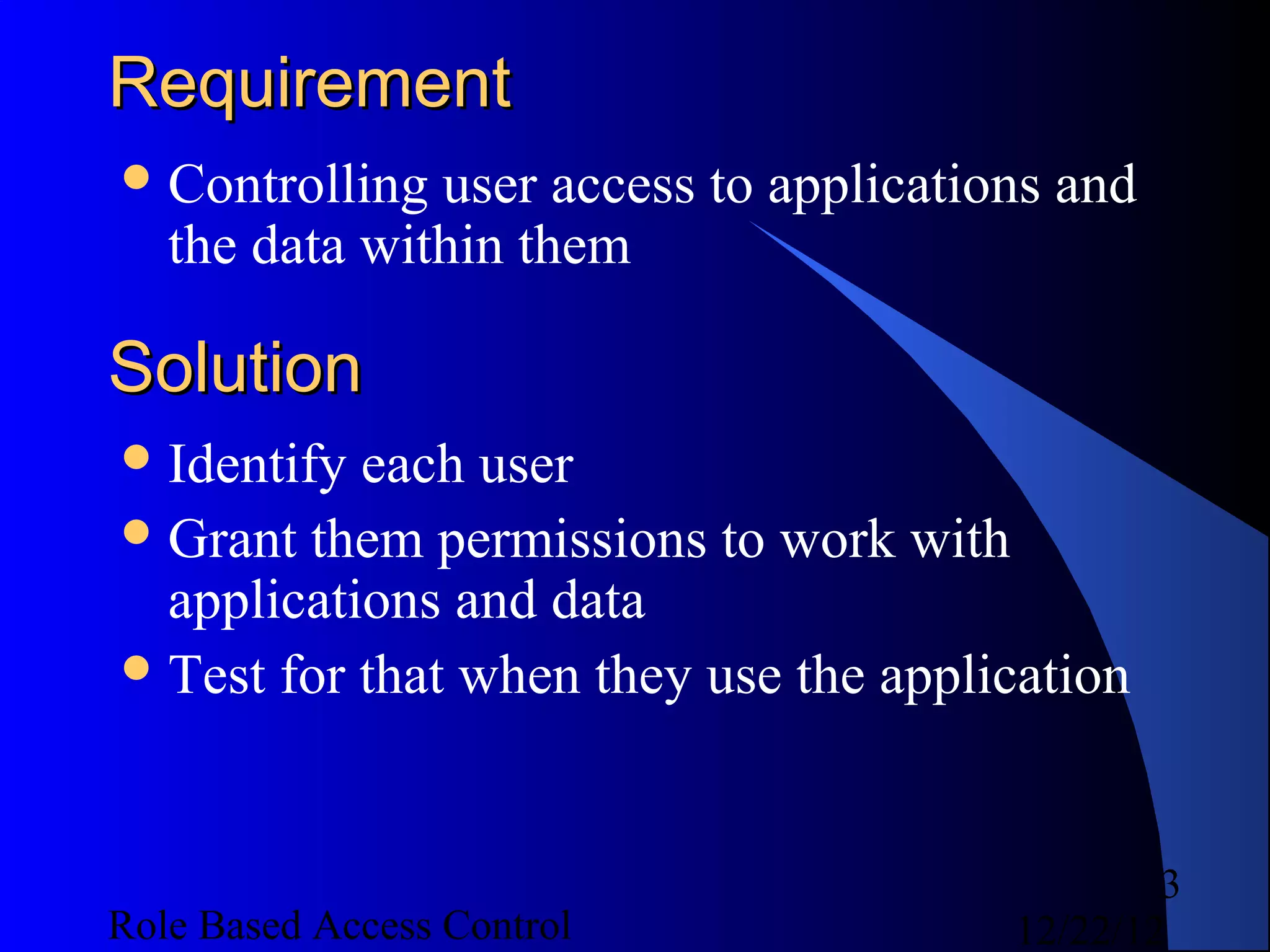
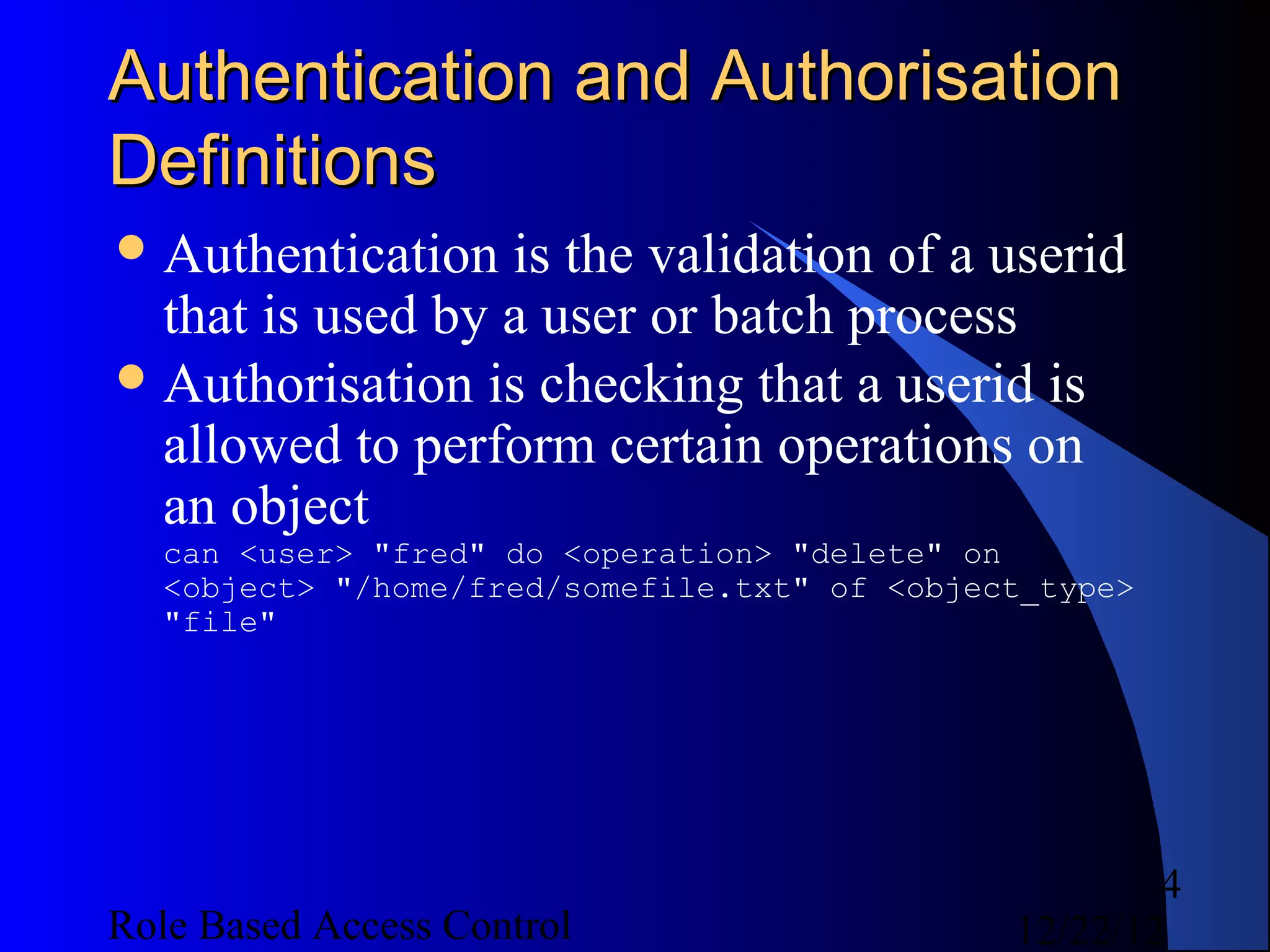
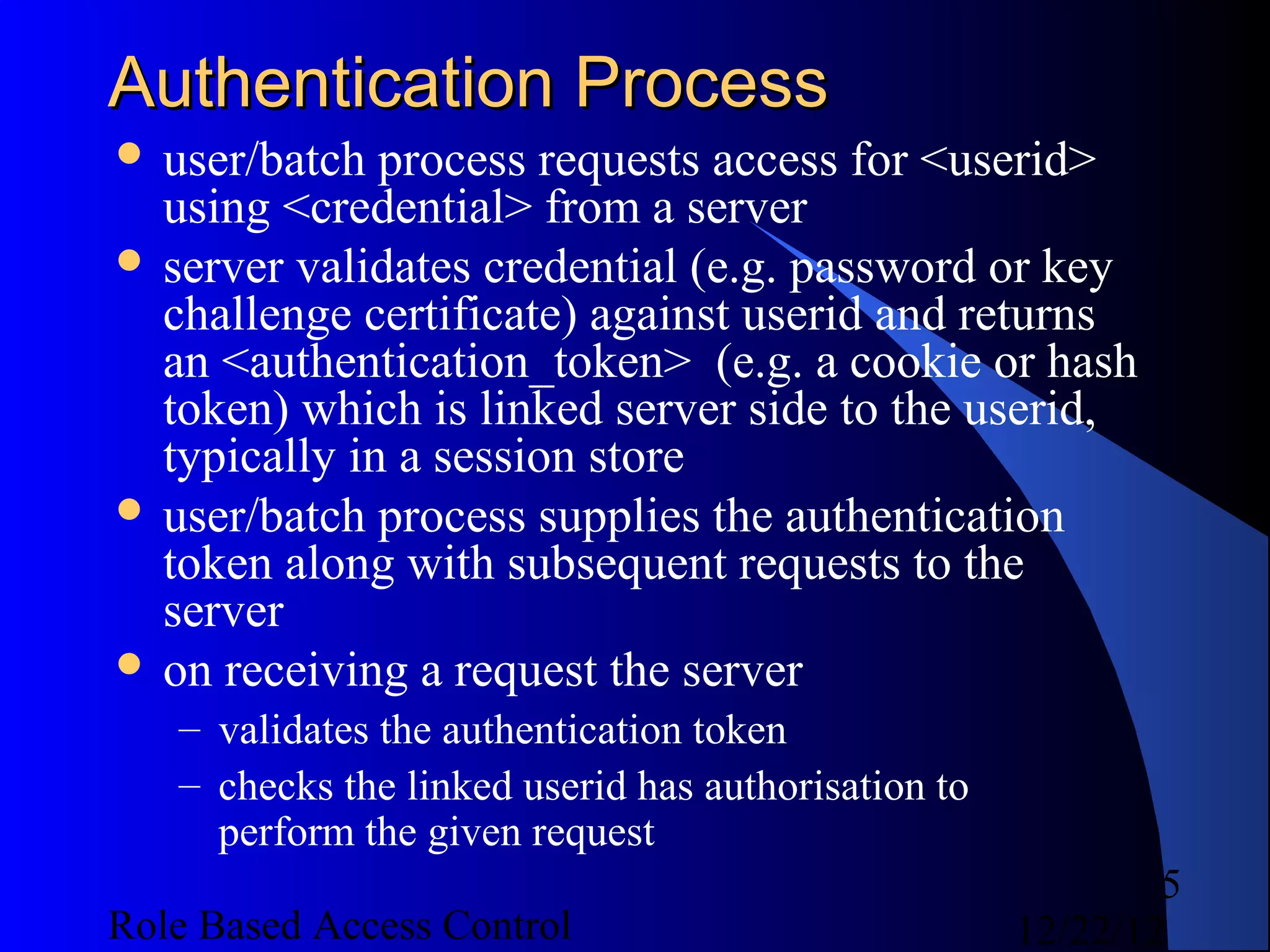
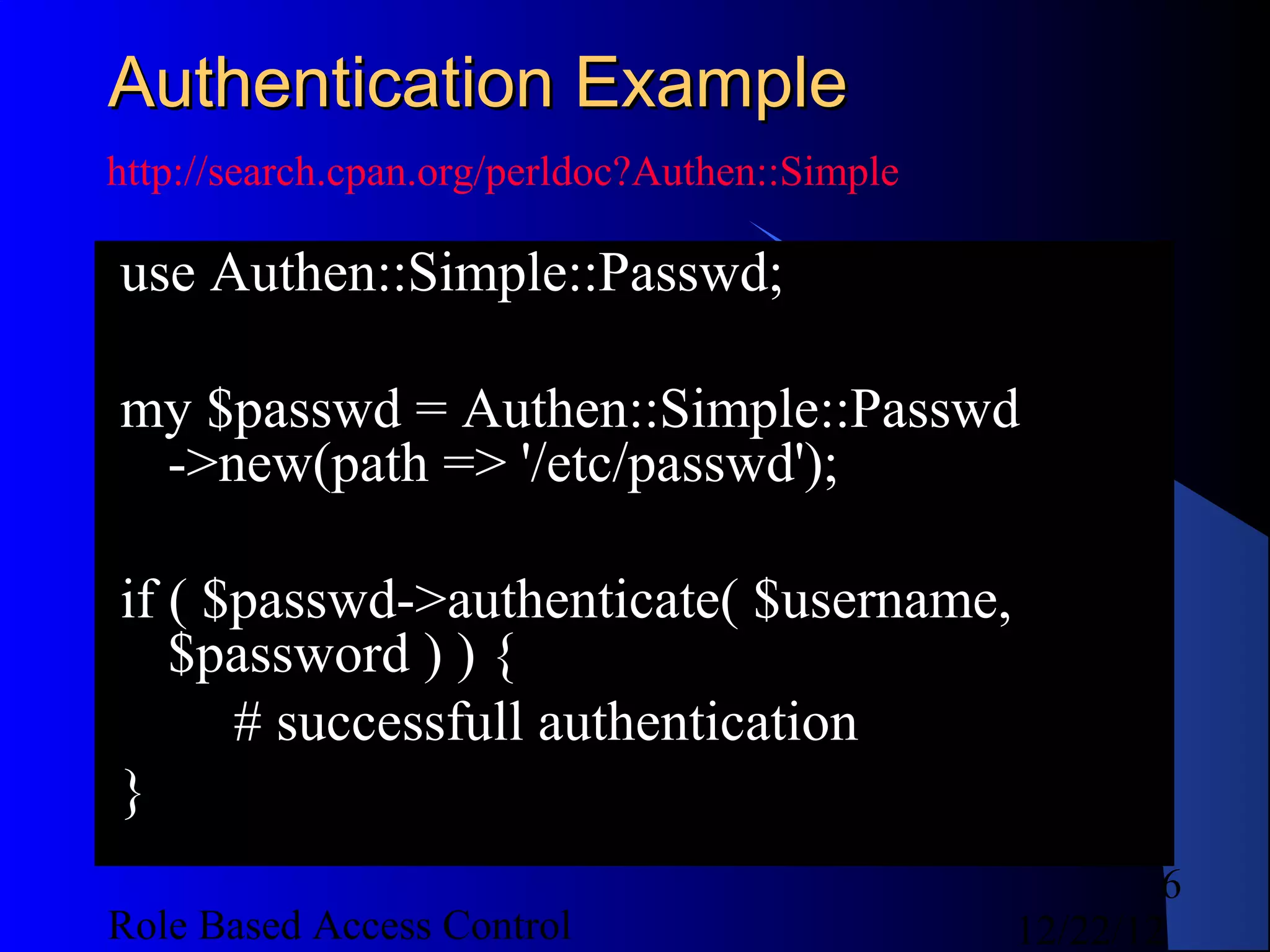
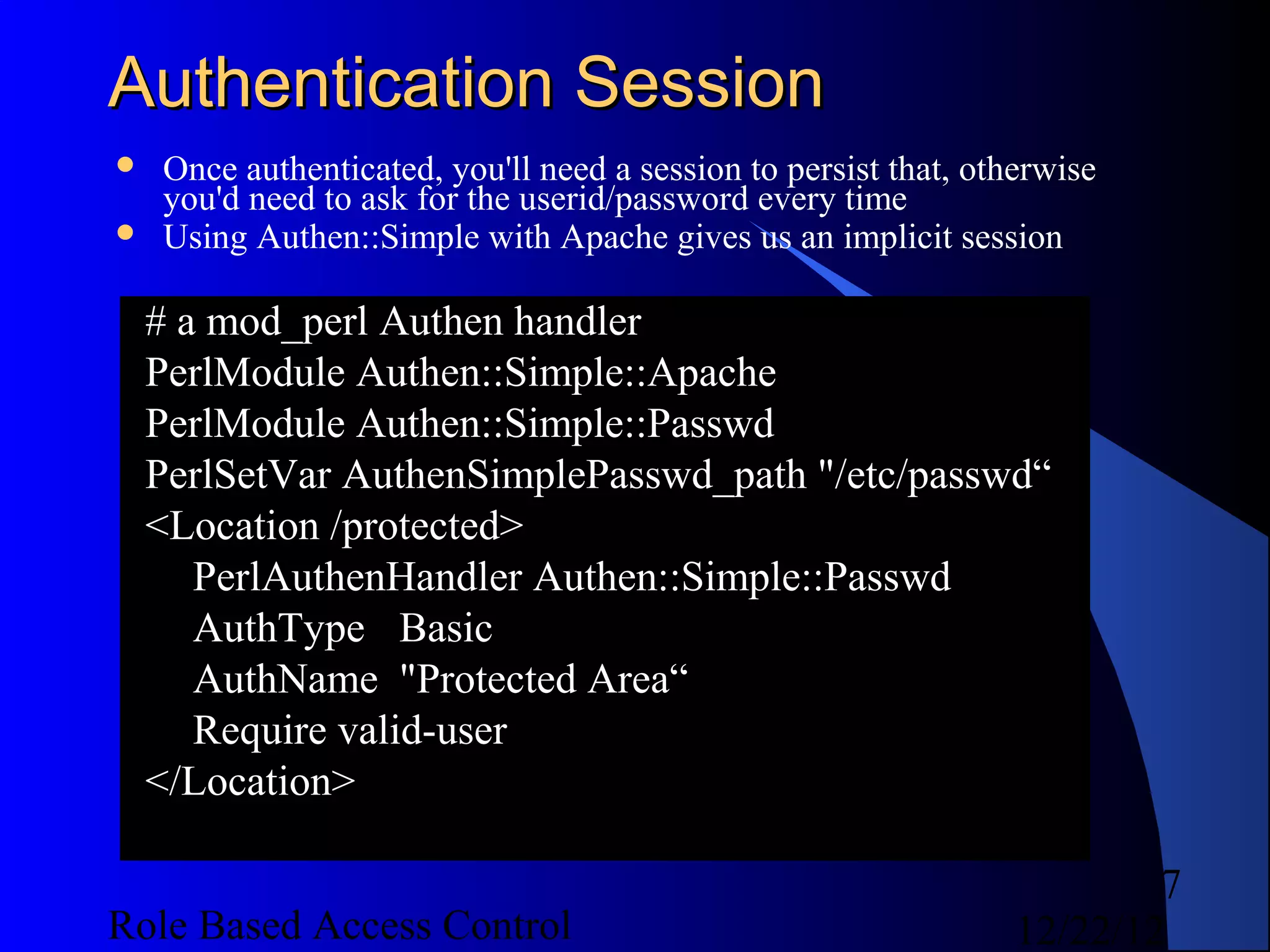
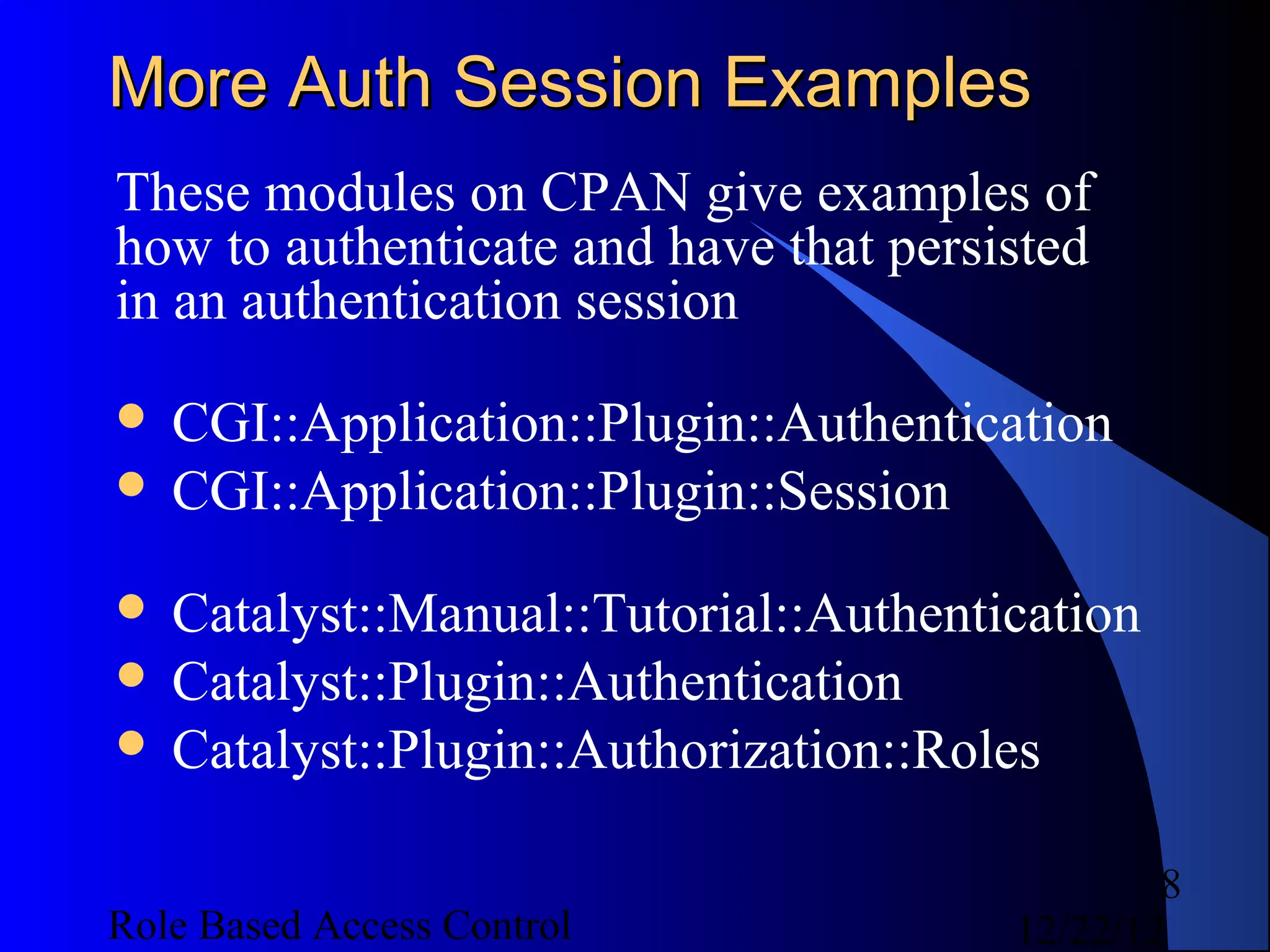
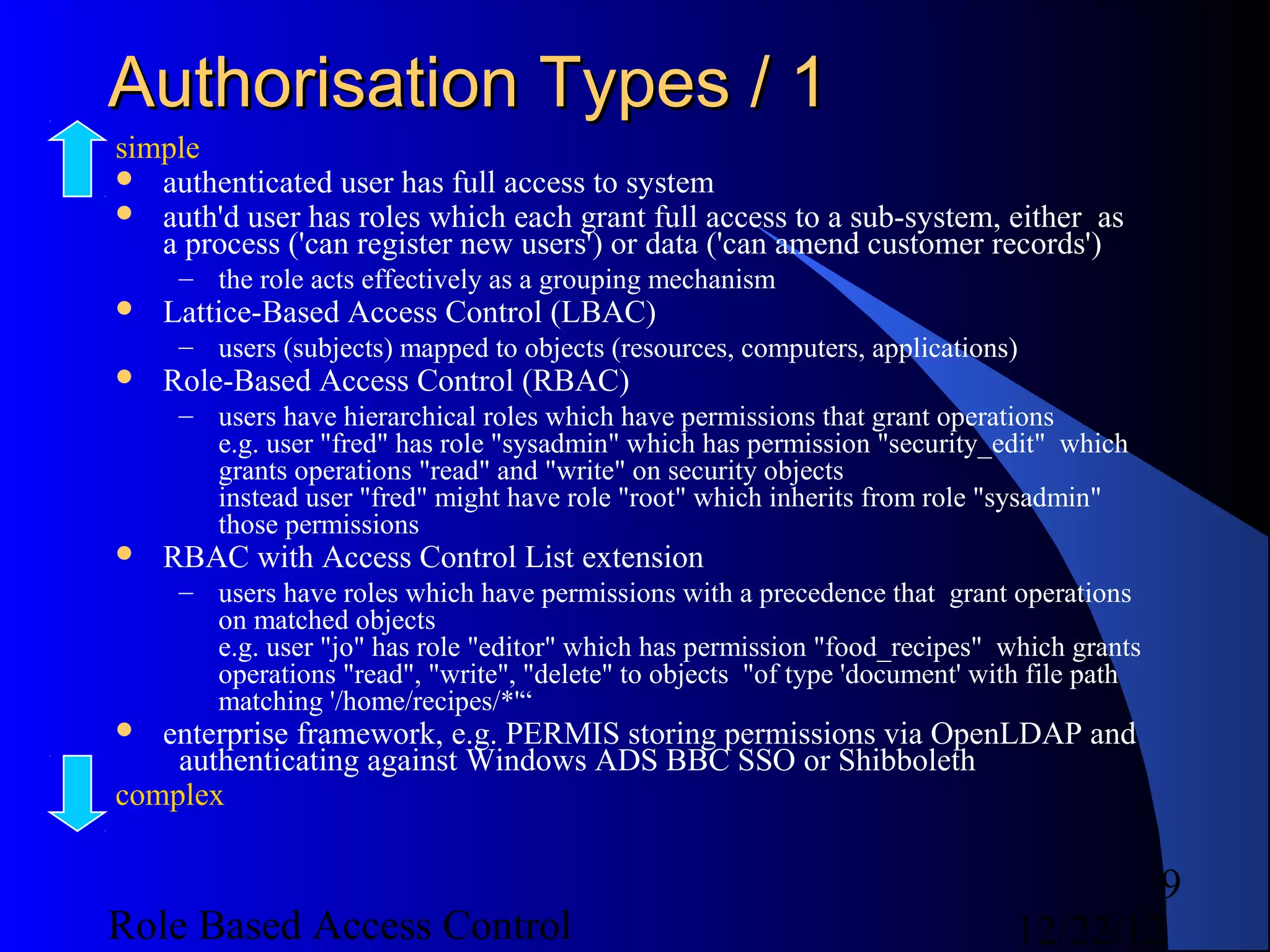
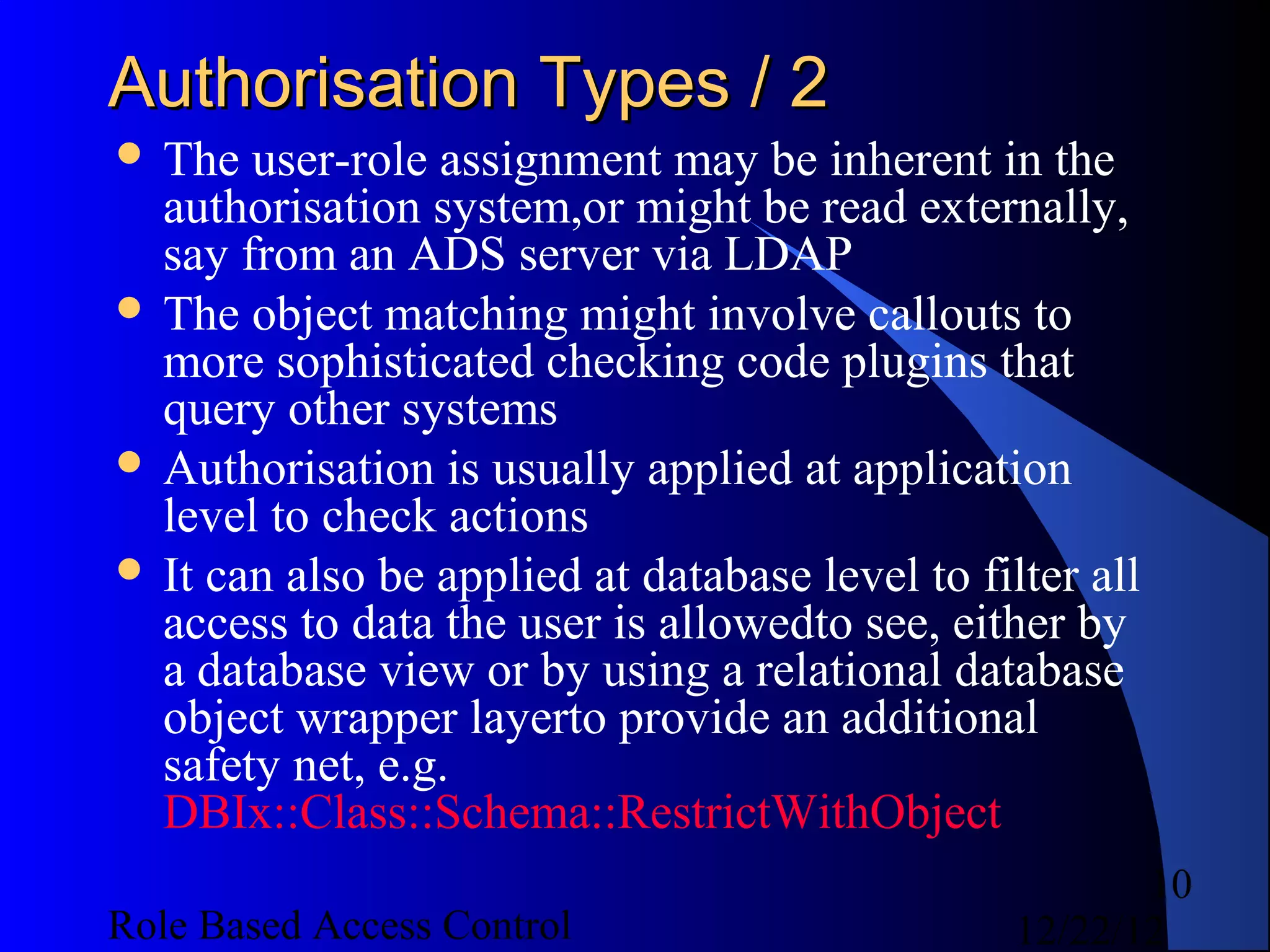
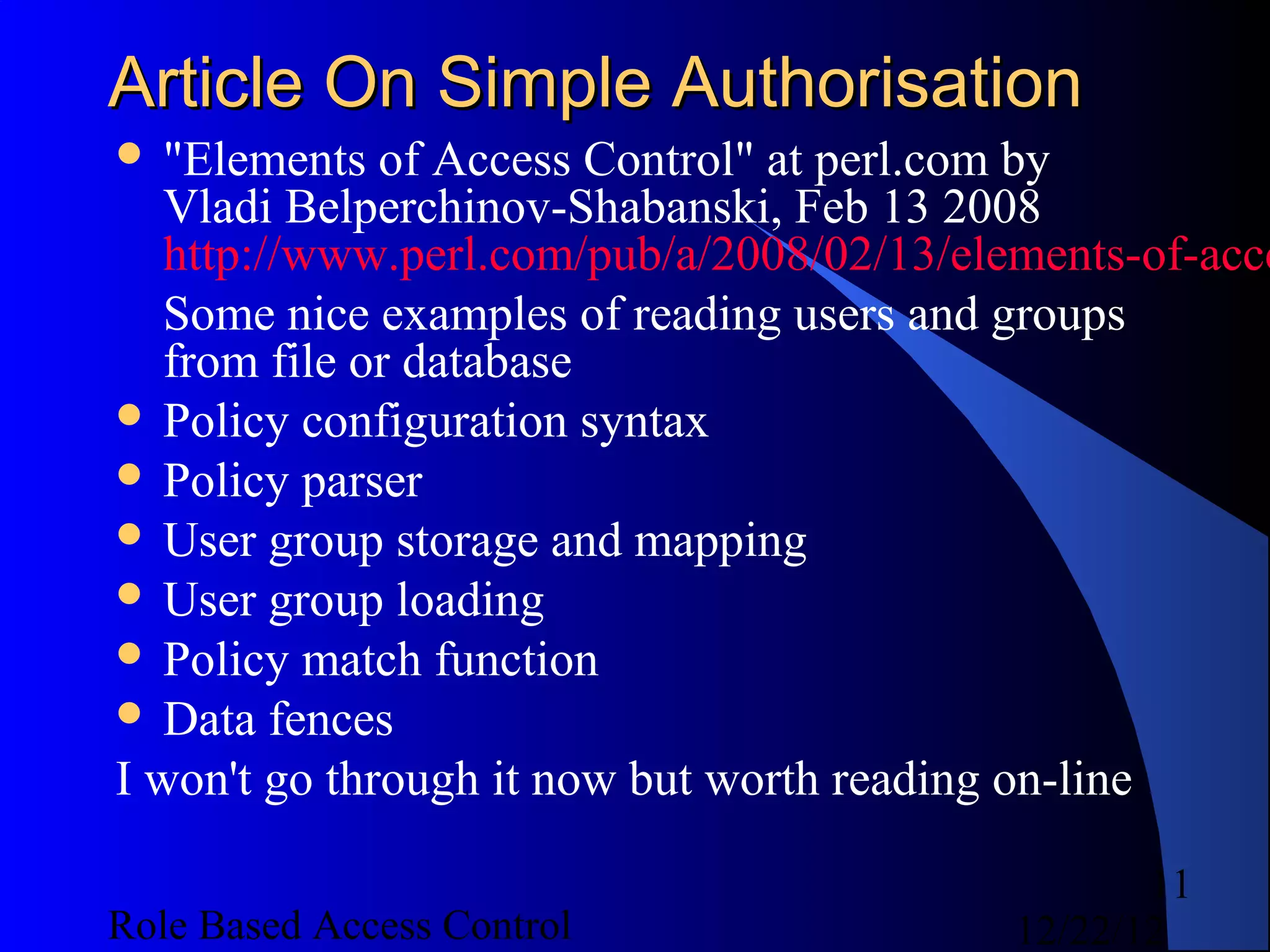
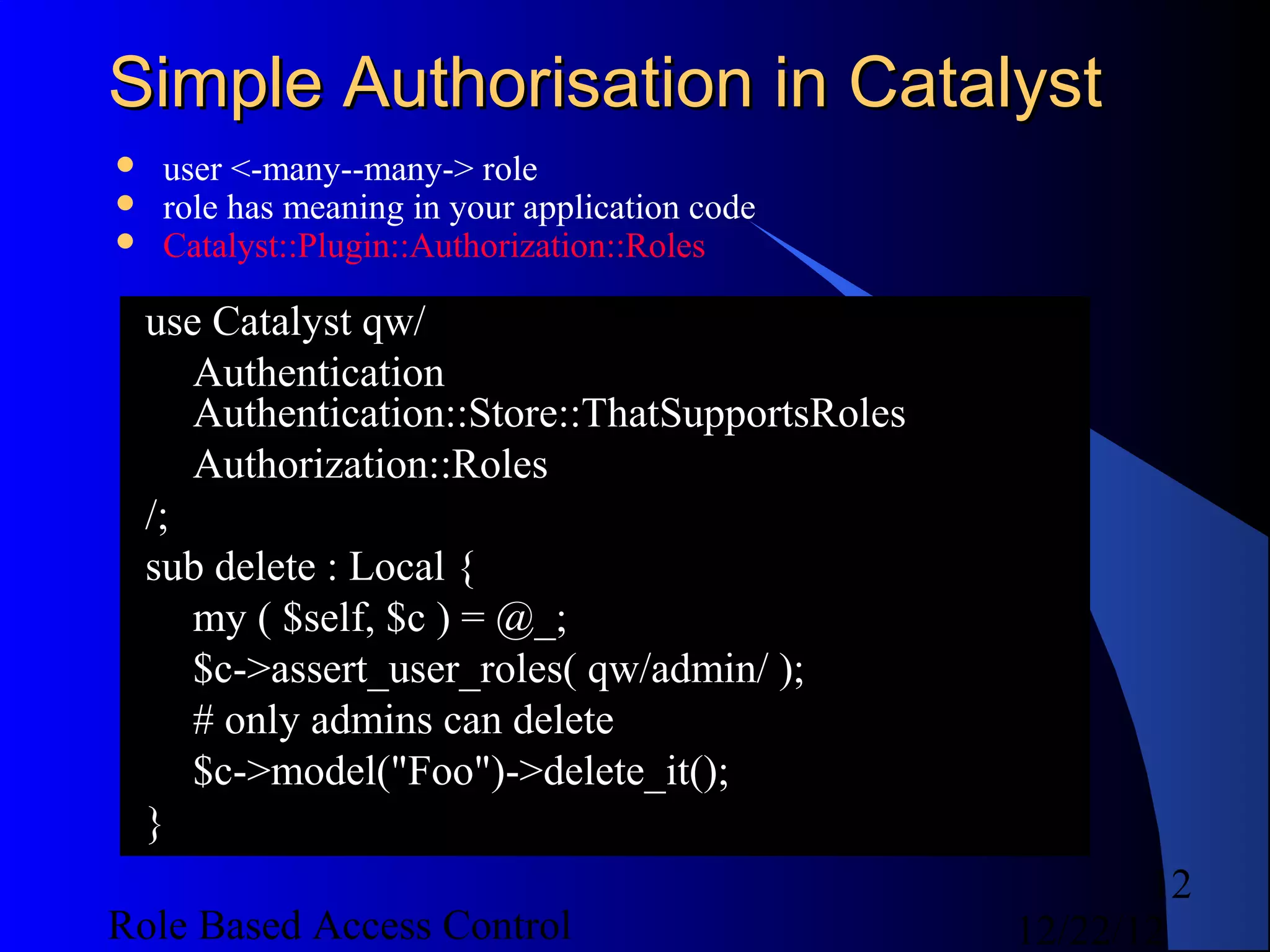
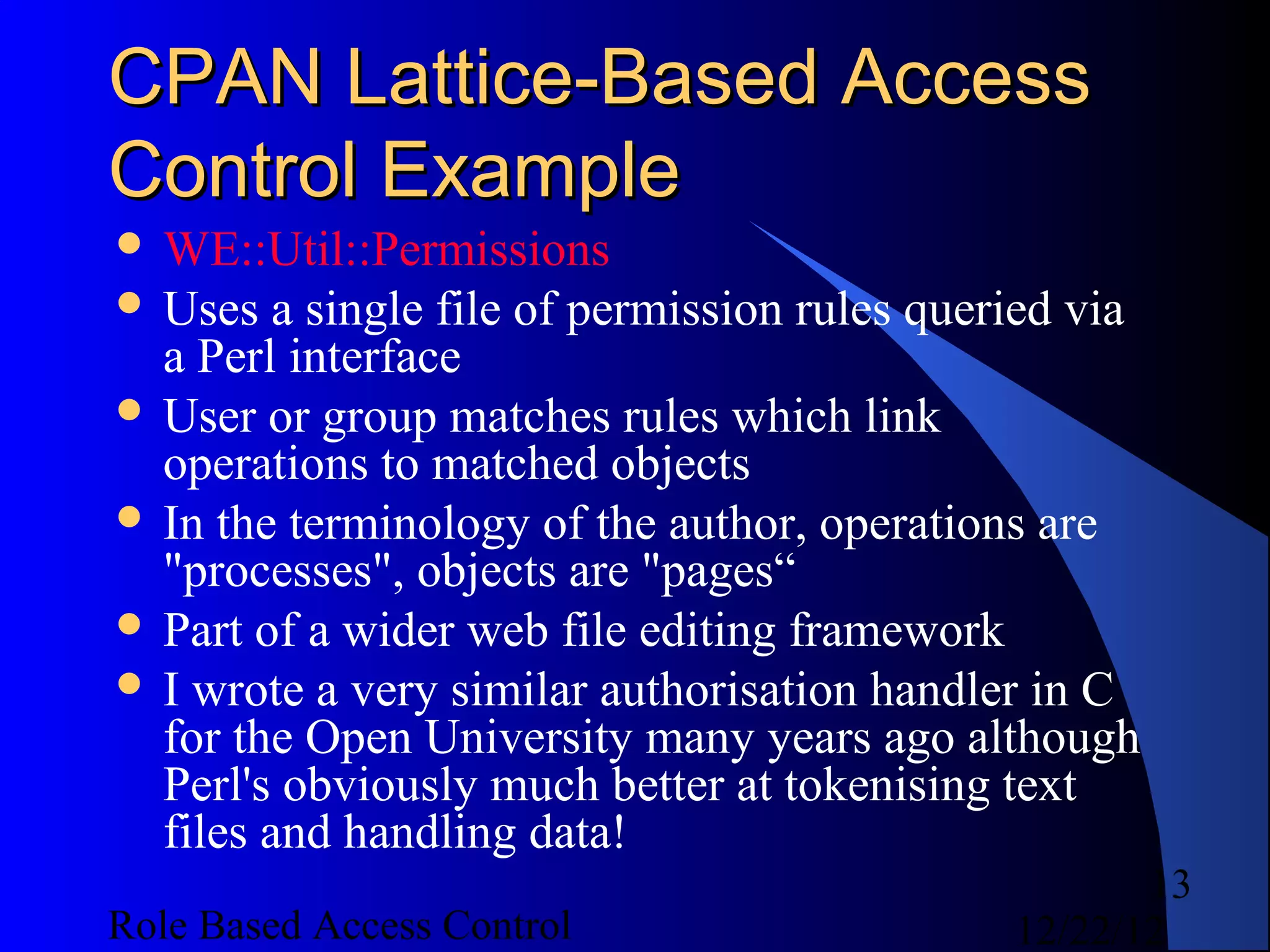

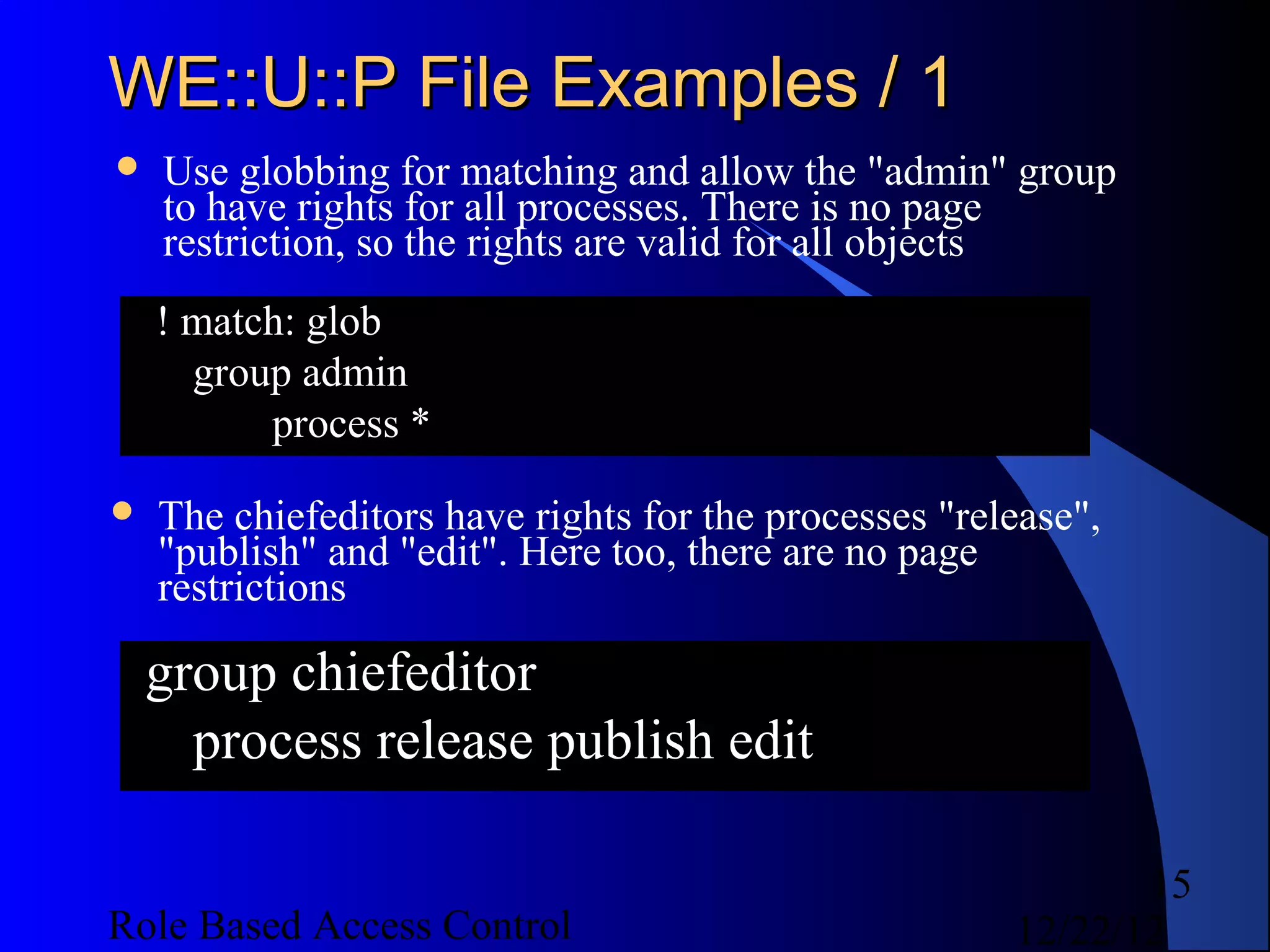
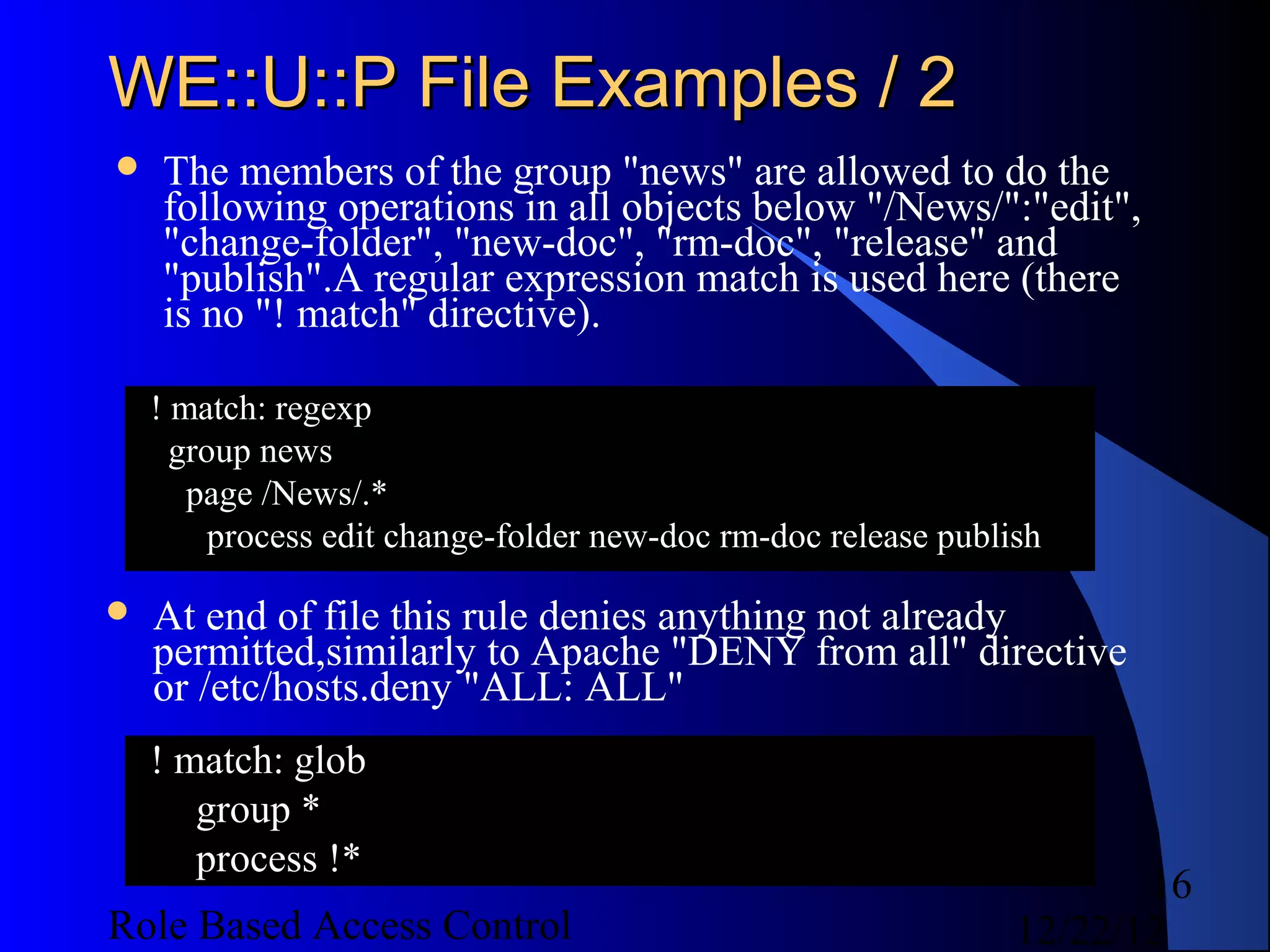
![WE::U::P Querying
use WE::Util::Permissions;
my $perm = WE::Util::Permissions->new(-file =>
$permissionsfile);
$perm->is_allowed(-user => "some_user", -process
=> "access");
$perm->is_allowed(-group => [qw( editor admin )],
-process => "delete", -page => 'a/b/foo.html');
# get subset of users from list provided who are
allowed process (operation) 'publish' on page
(object) '/home/index.txt‘
$perm->get_all_users([qw( janet john )], 'publish',
'/home/index.txt');
17
Role Based Access Control 12/22/12](https://image.slidesharecdn.com/rbac-121222055625-phpapp02/75/Role-based-access-control-17-2048.jpg)
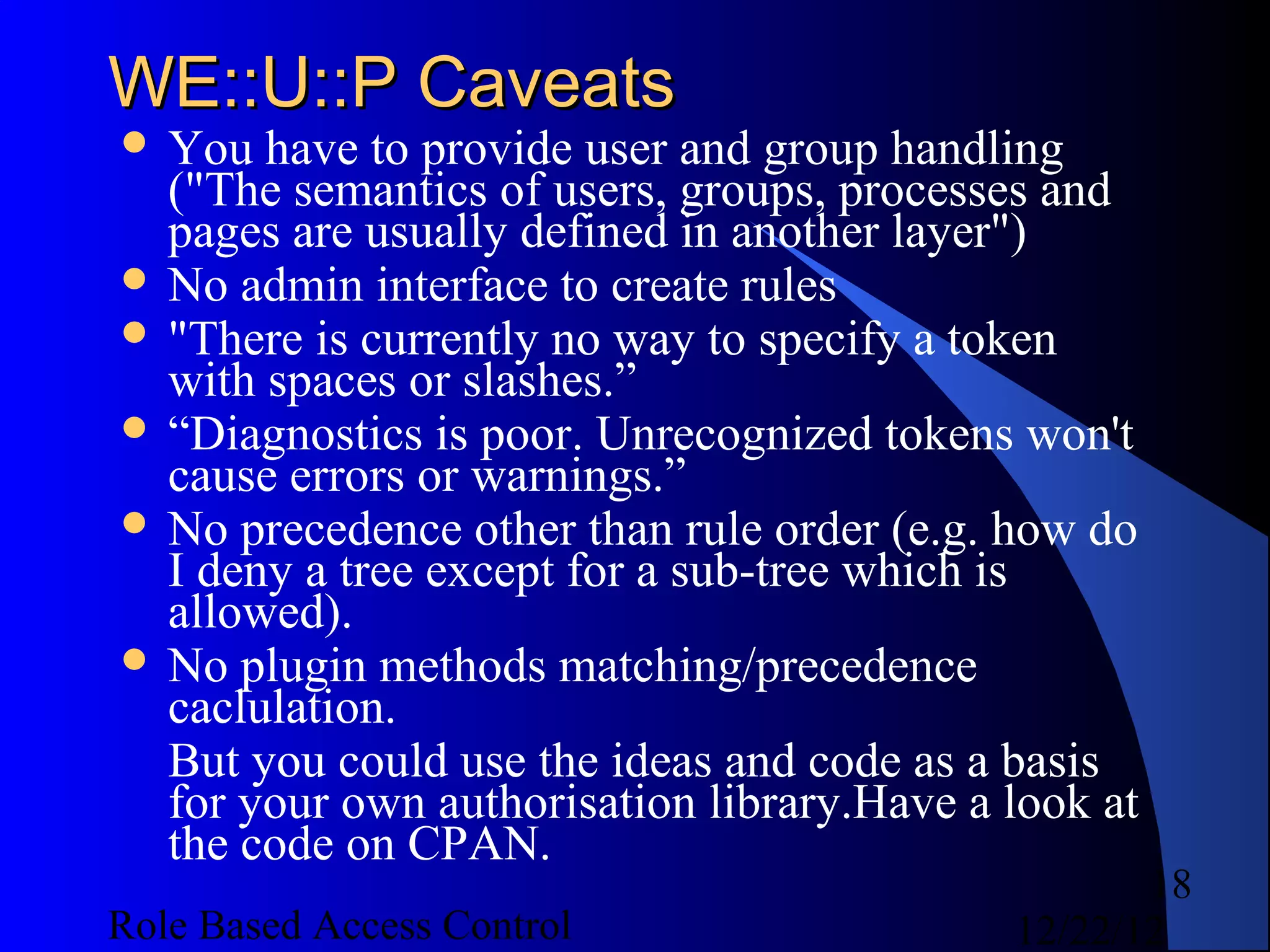
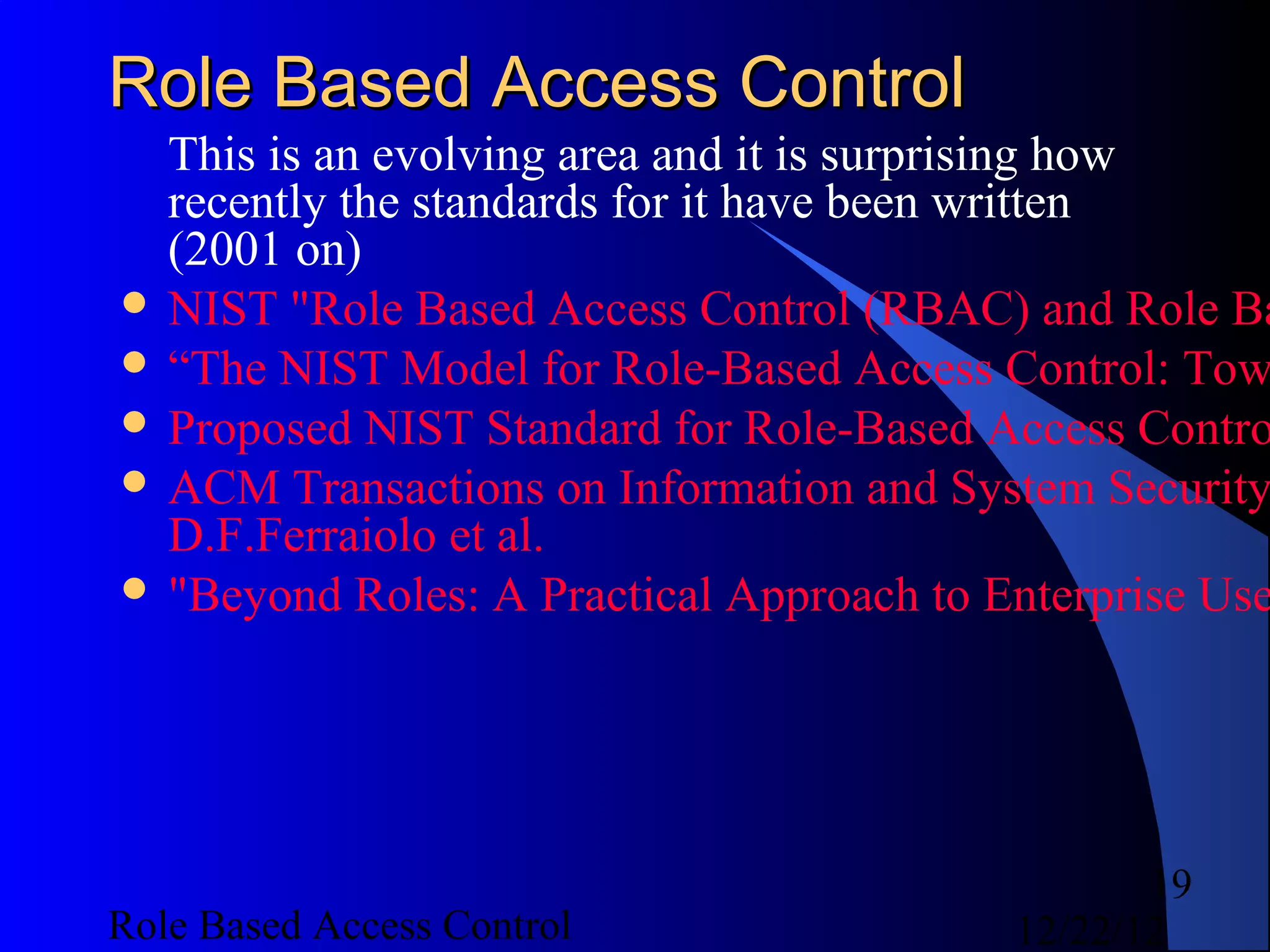

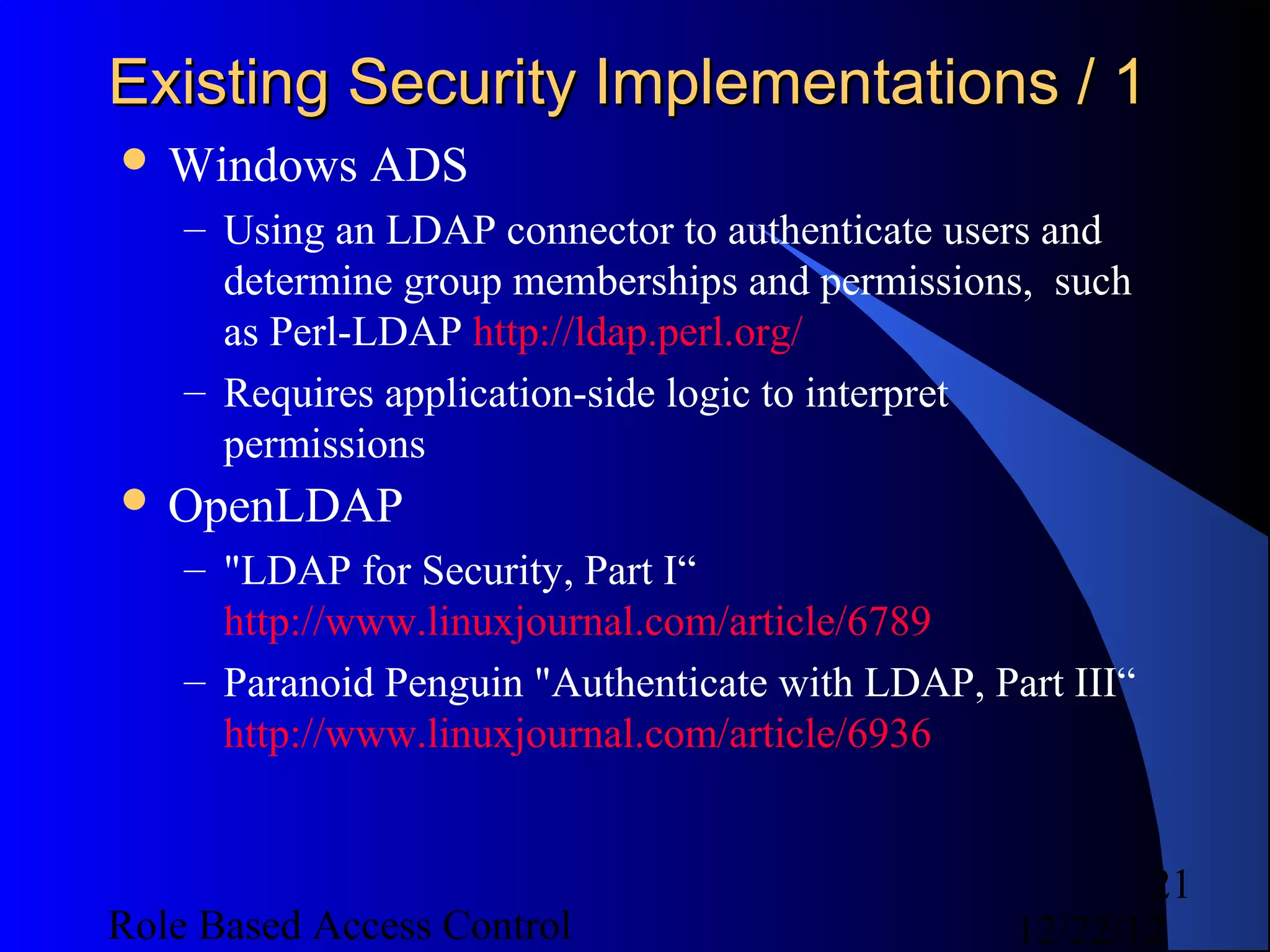
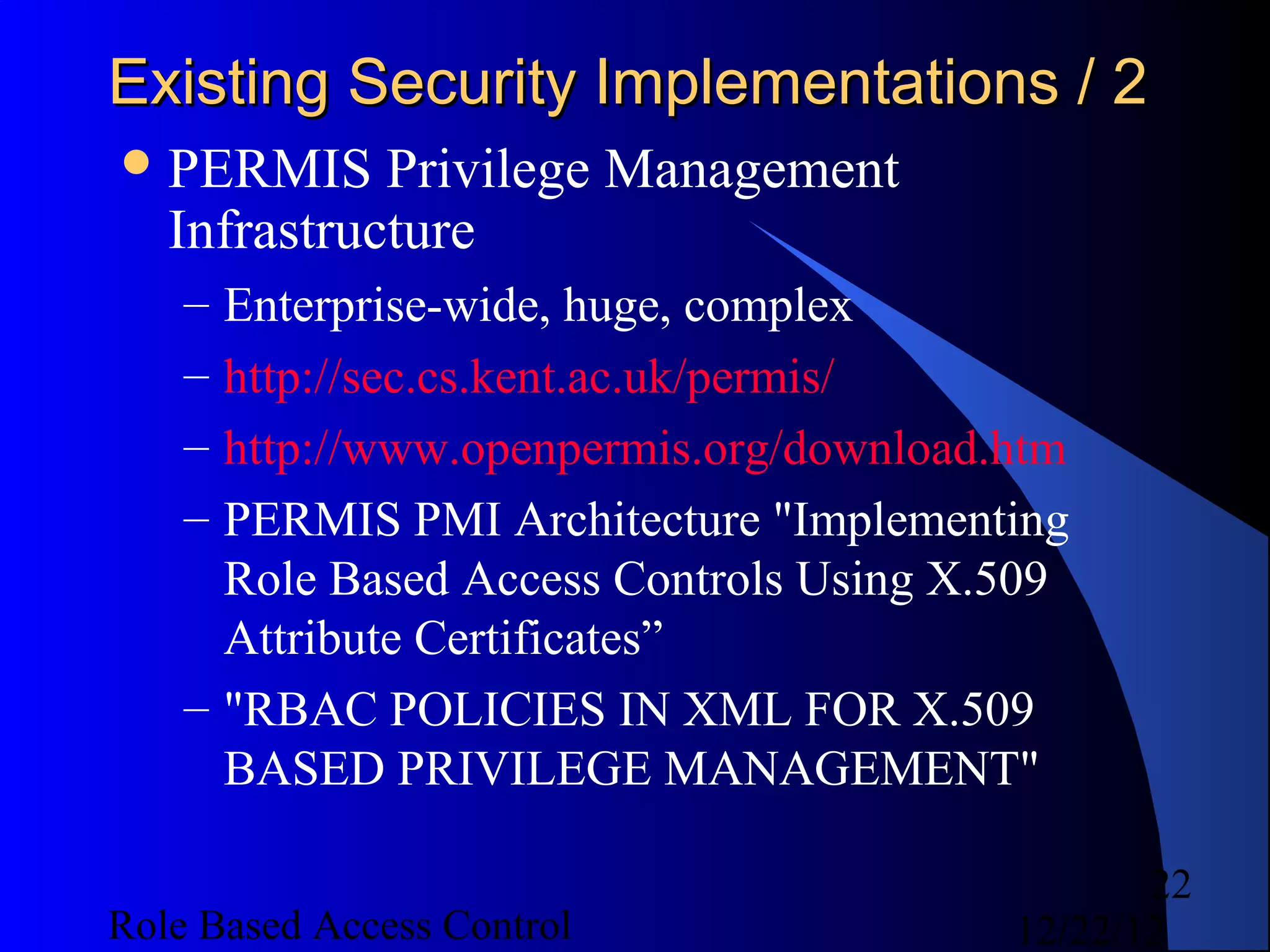
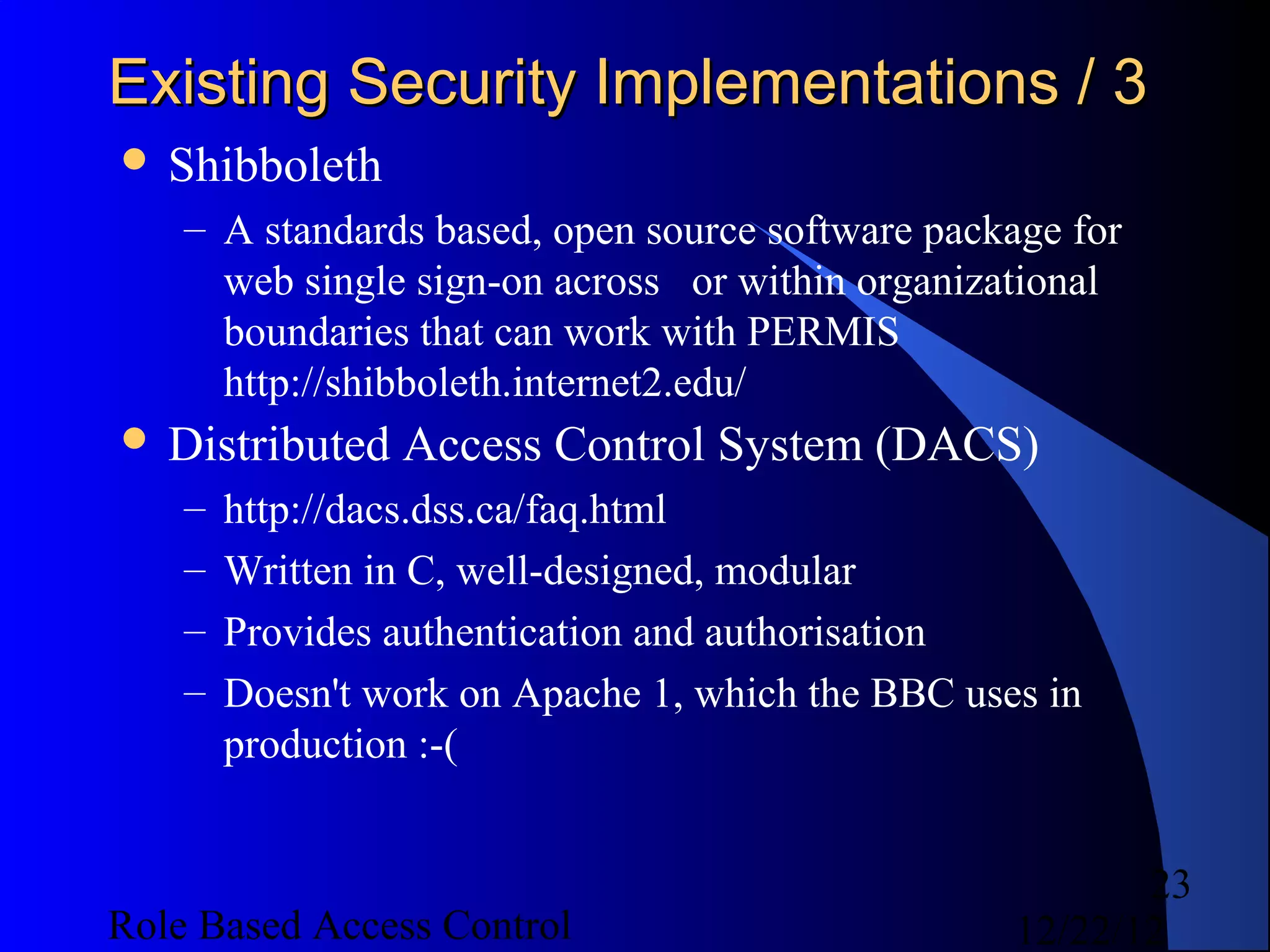
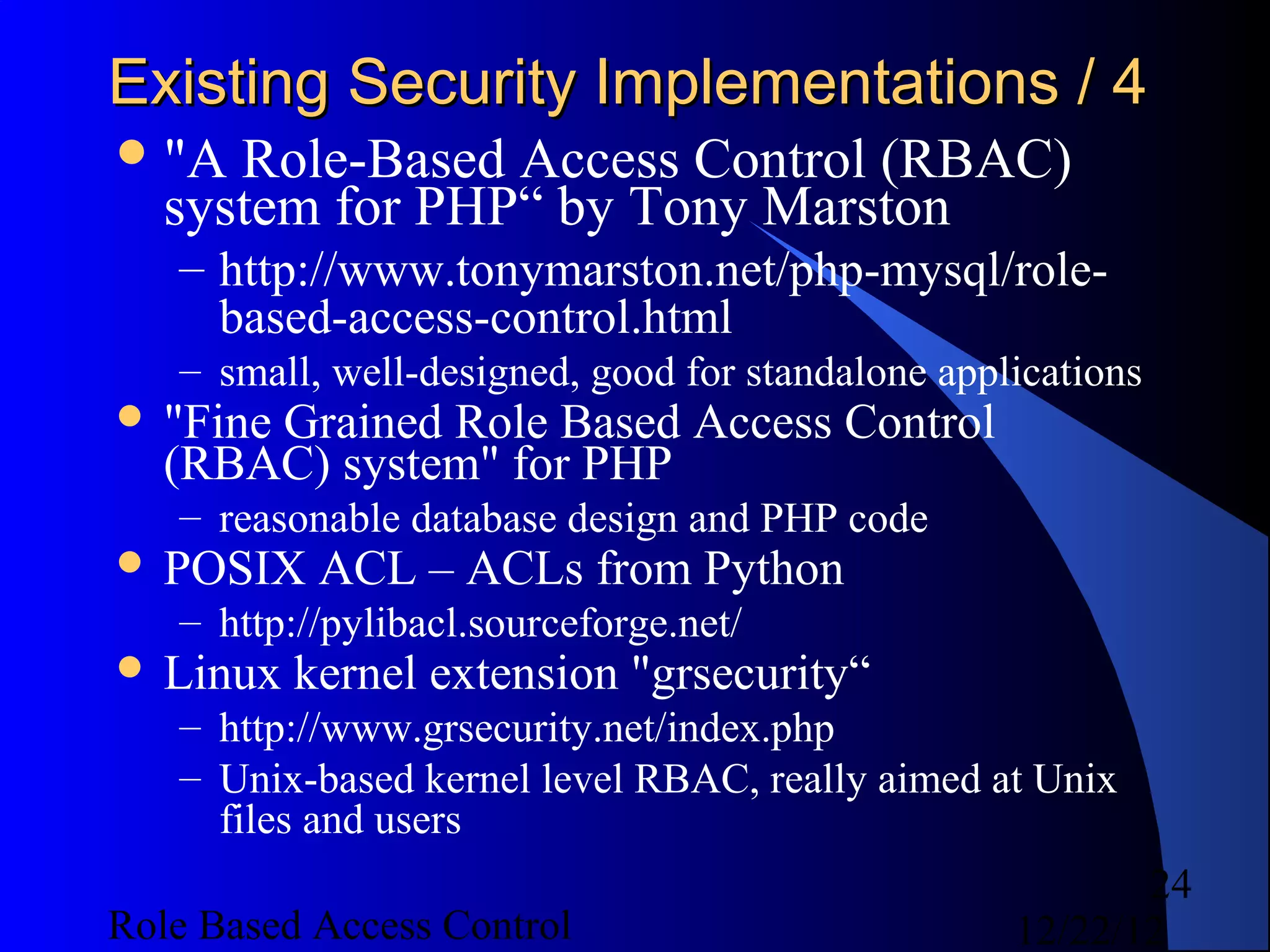
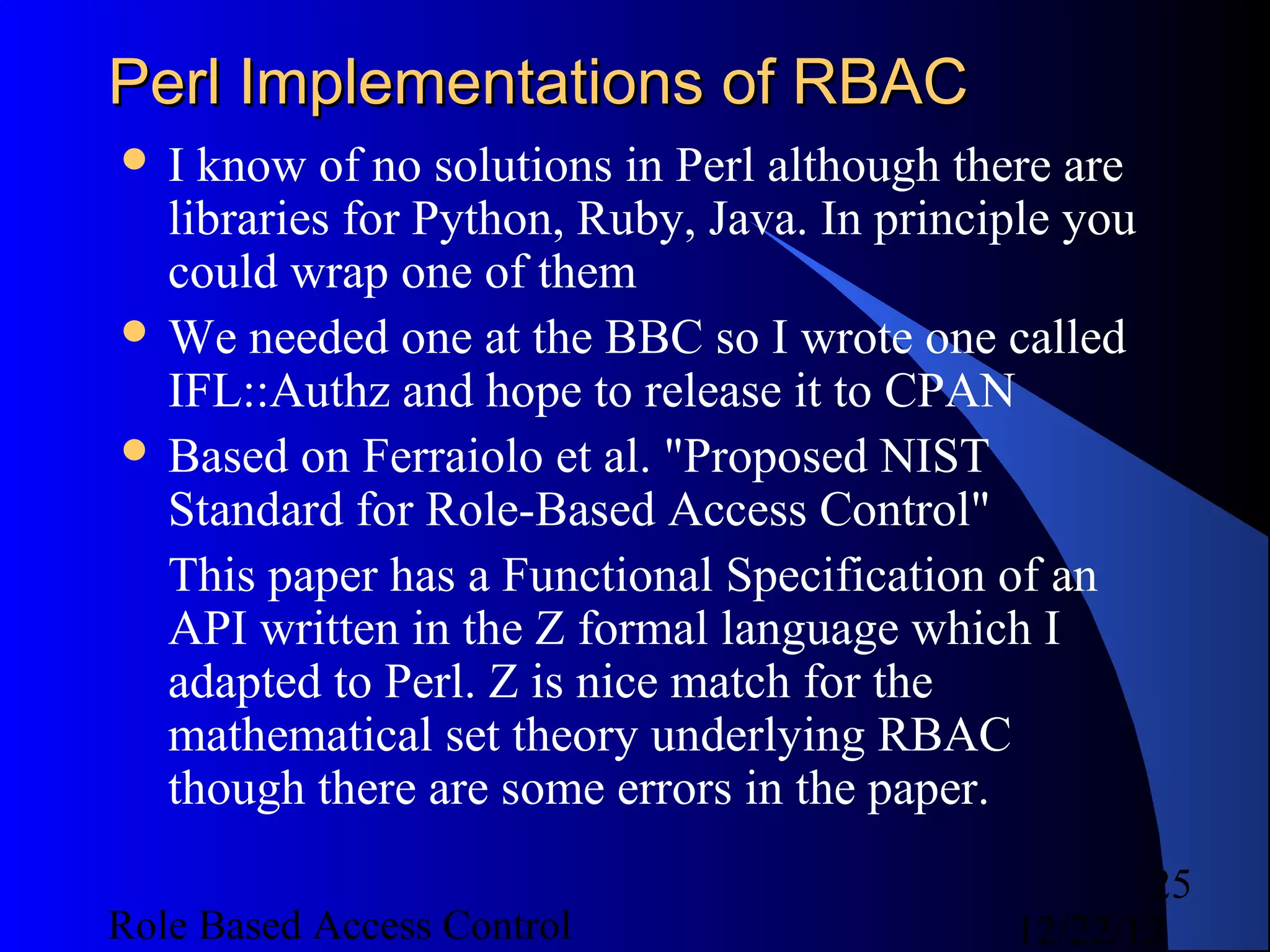
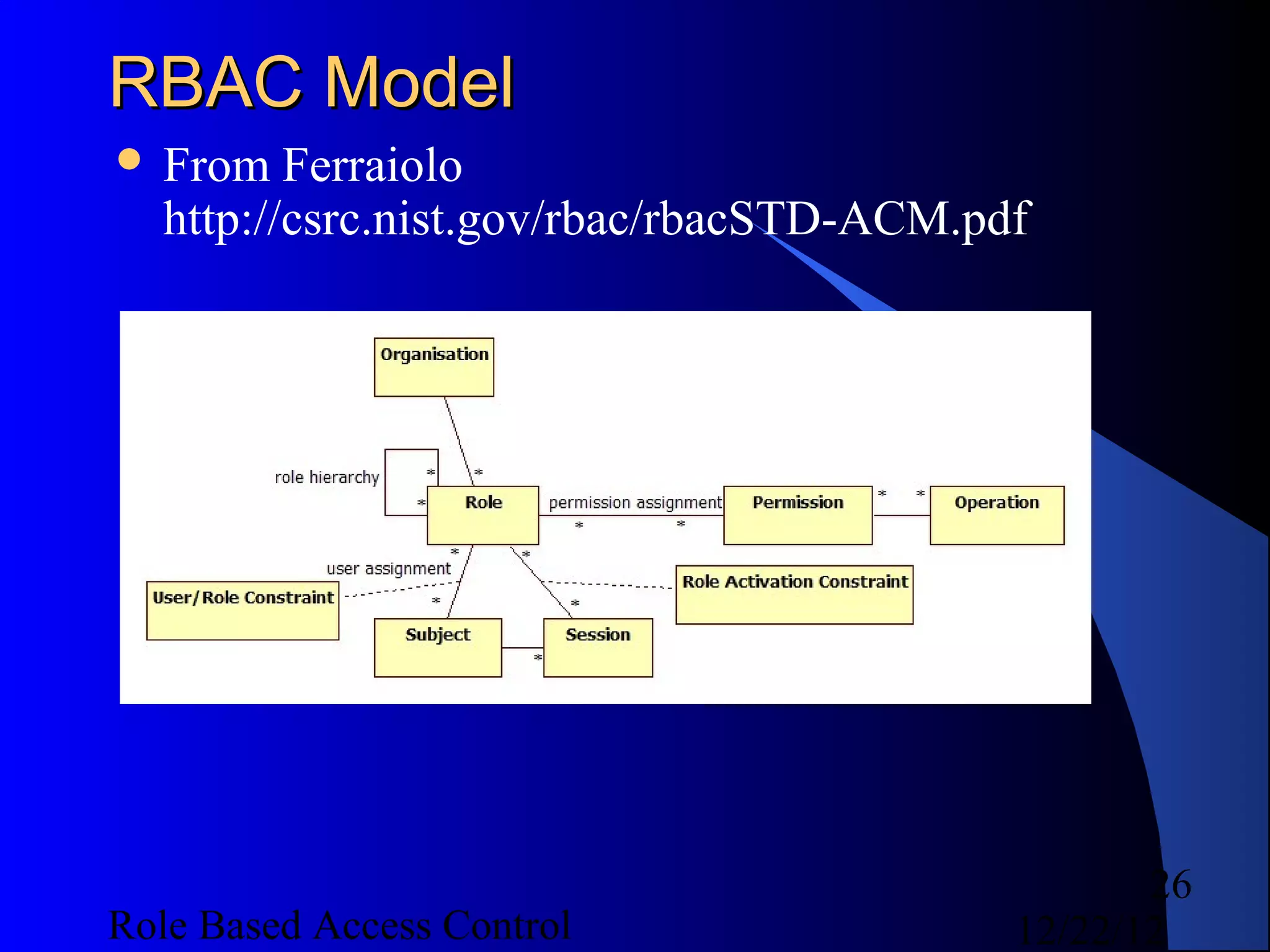

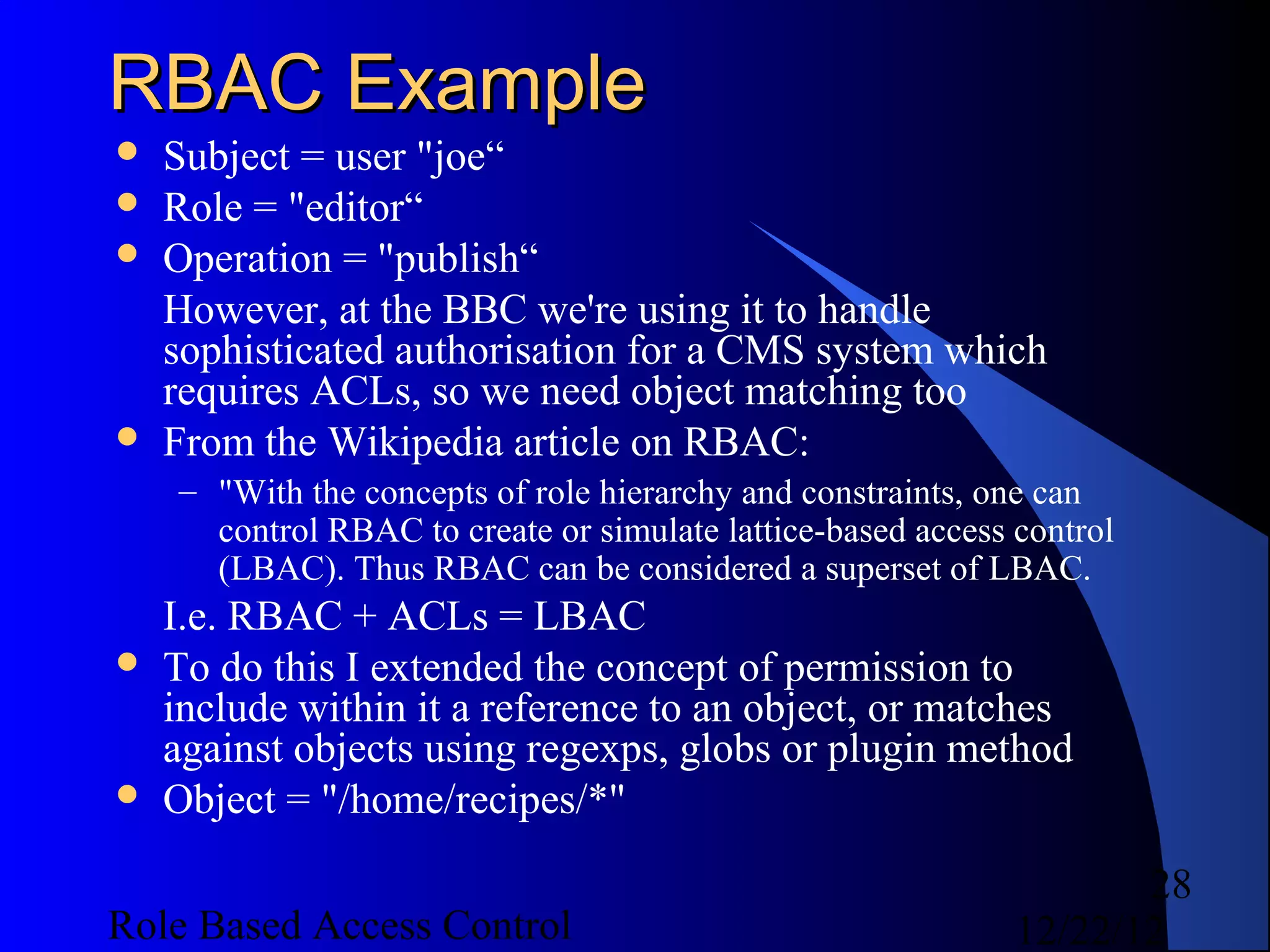
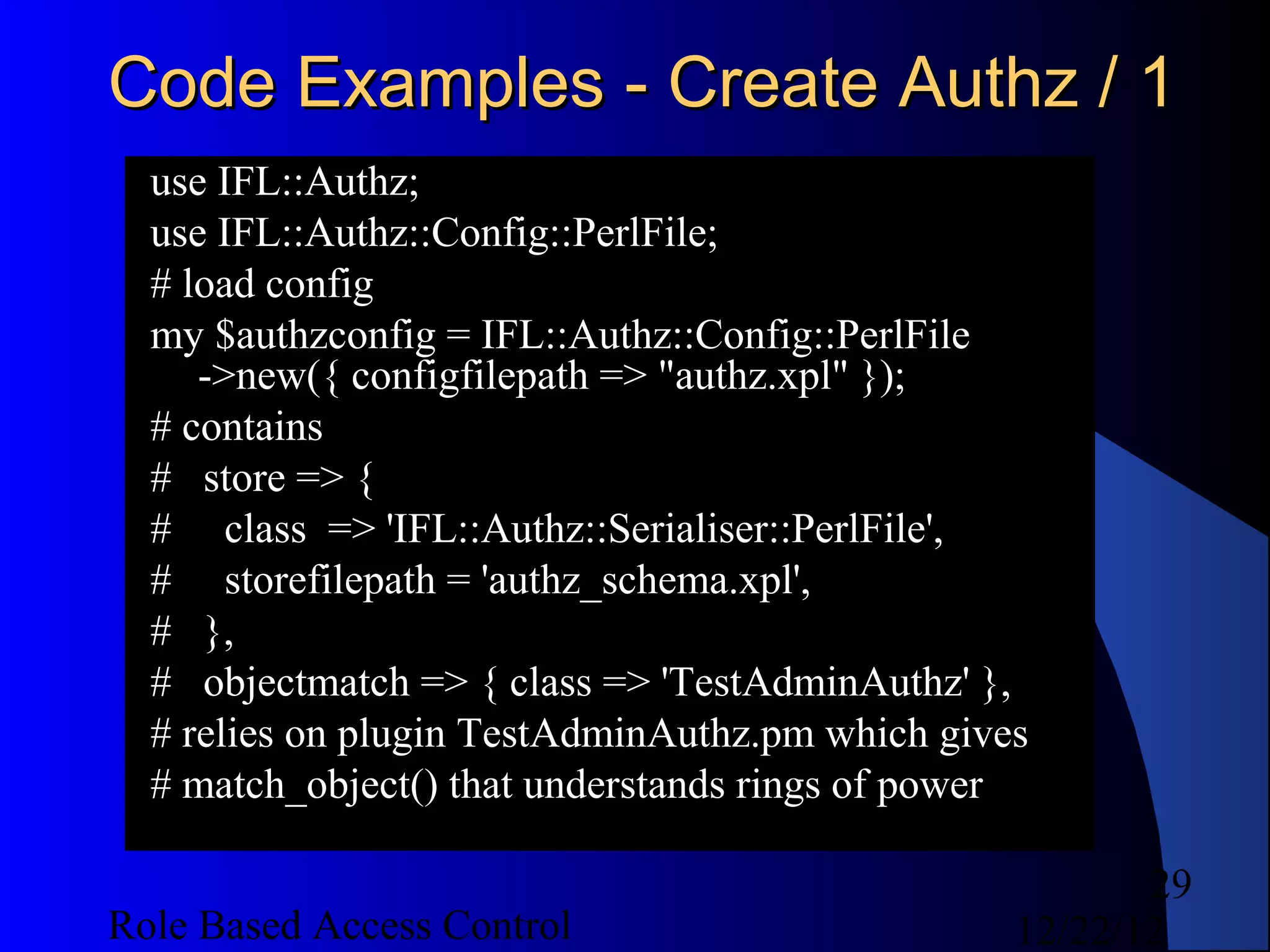
![Code Examples - Create Authz / 2
# create authz object
my $authz = IFL::Authz->new({ config =>
$authzconfig });
$authz->begin_transaction;
$authz->add_object_type({ name => 'ring', ops =>
['wear', 'destroy'], precedence => 1 });
$authz->add_user({ user => 'unittest', metadata =>
{ name => 'Ms. Unity Test', country => 'UK' } });
$authz->add_role({ role => 'tester', description =>
'Tester Role' });
$authz->grant_permission({role => 'tester',
description => 'access rings', operations =>
[qw( access read )], allow_deny => 'allow', object
=> { type => 'ring', precedence => 'DEFAULT', id
=> {} } } );
30
Role Based Access Control 12/22/12](https://image.slidesharecdn.com/rbac-121222055625-phpapp02/75/Role-based-access-control-30-2048.jpg)
![Code Examples - Create Authz / 3
$authz->add_role({ role => 'ring_bearer', description
=> 'Ring Bearer Role' });
$authz->grant_permission({ role => 'ring_bearer',
description => 'wear rings', operations =>
[qw( wear )], allow_deny => 'allow', object =>
{ type => 'ring', precedence => 'DEFAULT', id =>
{} } });
$authz->add_inheritance({ role_asc => 'tester',
role_desc => 'ring_bearer' });
$authz->assign_user({ user => 'unittest', role =>
'ring_bearer' });
$authz->end_transaction;
$authz->save;
31
Role Based Access Control 12/22/12](https://image.slidesharecdn.com/rbac-121222055625-phpapp02/75/Role-based-access-control-31-2048.jpg)
![Code Examples - Query Authz / 1
my $session = $authz->create_session({ user =>
'unittest', active_roles => [qw( ring_bearer )] });
# user unittest ops access on object_type ring from
indirect role tester inherited by assigned role
ring_bearer
die unless $authz->check_access({ session =>
$session, operation => 'access', object => { type
=> 'ring' } });
# user unittest ops wear on object_type ring from
assigned role ring_bearer
die unless $authz->check_access({ session =>
$session, operation => 'wear', object => { type =>
'ring' } });
32
Role Based Access Control 12/22/12](https://image.slidesharecdn.com/rbac-121222055625-phpapp02/75/Role-based-access-control-32-2048.jpg)
